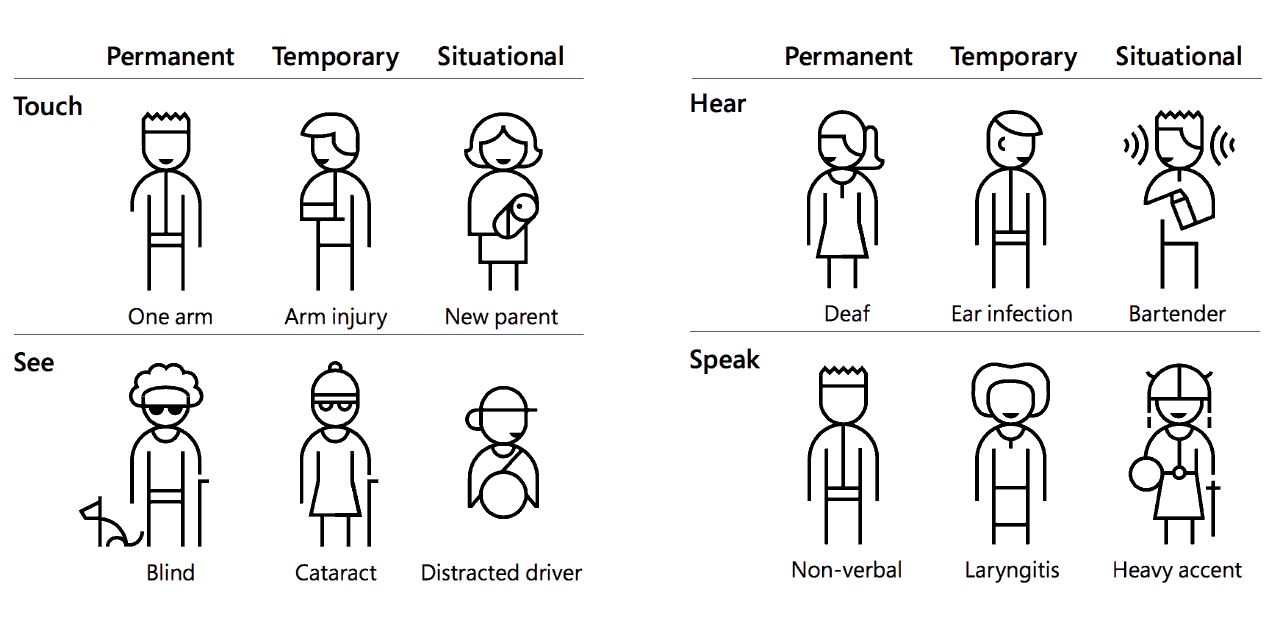Understanding inclusion
What does ‘inclusion’ mean?
Inclusion is about affording dignity and respect through our actions. To be inclusive is to take steps so that a person can meaningfully contribute in their school, workplace, community and society and have a sense of belonging. Our actions are inclusive when they afford everyone not just some, the dignity and respect of:
- Independent access: designed so that it doesn’t assume that assistance is required.
- Equitable access: designed so that it doesn’t take longer or make anyone go further.
- Participation and growth: designed so that everyone’s authentic involvement is a natural and expected thing. This is particularly important for people for whom disability is a lived experience.
- Satisfaction: designed to create a place or experience where people feel at ease, safe, engaged, and connected.
Our decisions either remove or raise barriers that shape the ability of others to access, participate in, and contribute to our work and communities on the same basis. To include and enable everyone from the outset, our mindsets and methods require empathy to understand people’s needs, the flexibility of thought to challenge our own assumptions, and the willingness to discover new ideas and practices that afford our audience dignity.
Disability is part of our lives
Our understanding of disability directly influences our thinking and actions about developing an inclusive culture that includes and enables people with a disability from the start of our interactions with them.
Both the Act and the United Nations Convention on the Rights of Persons with Disabilities (CRPDExternal link) highlight that, “disability results from the interaction between persons with impairments and attitudinal and environmental barriers that hinders their full and effective participation in society on an equal basis with others”.
In other words, Disabilities = impairments + barriers.
People with disabilities are ordinary people living with impairments who can be included and enabled to be fully participating and equal members of the community through removing the barriers. Their impairment may be intellectual, physical, cognitive, sensory, neurological in nature. It may also be a mental illness. What ‘disables’ a person with a disability is not their impairment, rather the barriers in society they encounter. Barriers are not limited to physical and/or environmental ones. They can also include attitudinal and societal barriers such as stigma and bias, as well as technological, policy, and other systemic barriers. The barriers are the consequences of our mindsets and actions.
Disability is diverse and dynamic
- It may be permanent or temporary.
- It may have existed from birth or may have been acquired due to an injury or illness or as part of the ageing process.
- It is often invisible, sometimes episodic, while for others, it may be stable.
- Its impact upon any one individual may be mild, through to significant and severe.
- It increases with age, from an average of 1 in 5 in the Australians population, to 1 in 3 by the age of 55 and finally 1 in 1 by the age of 85.
Whilst disability is diverse and dynamic, what people with a disability have in common is the disadvantage and discrimination that they can experience as a result of the barriers they encounter.
A quick snapshot of our audience
- In NSW, there are over 1.3 million people living with disability.
- 25% of the population have perceptual problems
- 36% of adults have less than functional literacy skills
- Nearly 50% of our population wear glasses or contact lenses
- 54% of people report having at least one long-term eye health condition.
- 1 in 5 students in NSW Public schools (172,000 students) have a disability [1]
- 85% of those students (146,000) learn in mainstream classes
- 12% of those students (21,000) learn in support classes in mainstream schools
- 3% of those students (5,700) learn in schools for specific purposes (SSPs).
- 135, 000 students required adjustments that are in addition to the strategies & resources available to all students
[1] National Consistent Collection of Data set
Our inclusive response
Every stakeholder wins when designing for individuals is standard practice. As shown in Figure 1, while some people have a permanent disability, others can have temporary or situational disabilities.


Research highlightsExternal link that inclusively designed products and services that have end-users in mind, can reach and benefit up to four times the size of the intended audience. By designing for including someone with a permanent disability, someone with a temporary impairment or situational limitation can also benefit. Inclusive solutions benefit everyone, for they are essential for some and useful for all.
We believe that each of us – no matter our level, position or function – has an active part to play in building an inclusive culture. It begins with recognising that diversity is the norm not the exception. As individuals, teams and divisions we can all:
- Recognise that exclusion exists in our systems, processes, and attitudes.
- Learn from diversity – Consult, listen and learn from stakeholders about their experiences.
- Solve for one, extend to many. Co-design with stakeholders from concept through to completion to ensure solutions are “essential for some and useful for all.”